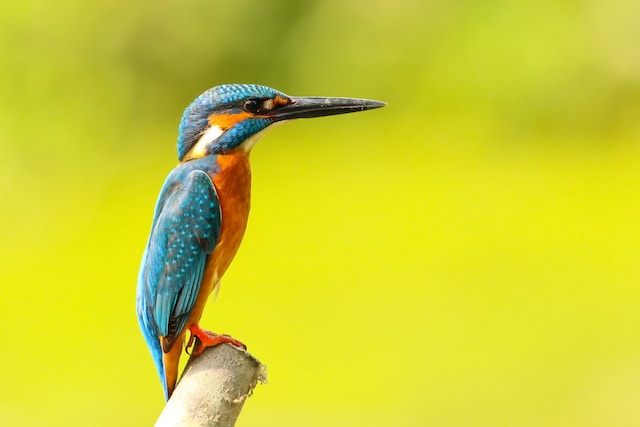
The Ultimate Guide to Choosing the Perfect Bird as a Pet
Contents
Introduction
If you’re looking for a fun and friendly pet, a bird might be the right choice. Birds are intelligent, social creatures that need a lot of attention and love. They can be very rewarding pets if you have the time to devote to them. However, it’s important to find the right type of bird for your home so that both you and your feathered friend can live happily ever after!
1. Parakeets
Parakeets are popular pets, and they’re easy to care for. They’re also noisy, territorial and require a cage that is at least 20″x20″x24″.
Parakeets can be loud when they’re mating or competing for attention (and food). If you want a quiet bird, look at the next option instead: budgies!
2. Budgies
Budgies are the most popular pet bird. They are also known as parakeets or budgerigars, and they’re native to Australia. These small birds have been domesticated for thousands of years, making them easy to care for and train. They make great companions!
Budgies are social birds that enjoy being around people or other pets in their household. This makes them ideal for families with children who want a pet that can be part of the family activity outside of its cage time (which should still be plenty!). Budgies have been known to talk very well–even better than some dogs! They will repeat words you say back at you, which is fun for everyone involved because it means no more miscommunication between humans and animals (or vice versa). Budgerigars also play games with their owners by mimicking behaviors like clapping hands together over food bowls or perching on top of heads when it’s time for bed (though this last one might just be me).
3. Cockatiels
Cockatiels are a popular choice among bird owners. They’re easy to care for, and their vibrant colors make them an exciting addition to any home. Before you bring one home, however, there are some things to consider:
- Where will your new bird come from? Cockatiels are easily available from pet stores or breeders. If you choose to buy from a breeder, ask about their breeding practices and how they treat their birds (we’ll talk more about this later).
- What size cage do I need? Cockatiels need plenty of space–at least two square feet per bird–so make sure your cage is large enough before bringing one home!
- How much time can I spend playing with my new friend? Cockatiels love attention but also need time alone so they can explore on their own without being distracted by people too much; plan accordingly!
4. Lovebirds
Lovebirds are small, colorful birds. They’re social and active, so they need to be kept with another lovebird or in a flock of at least three. They’re also friendly and affectionate, but they can be loud if not given enough toys to play with (so make sure you have a cage that’s large enough for your pet).
Lovebirds need plenty of toys and perches for their claws to hang on to when they’re jumping around the cage. You may want to provide your lovebird with some sort of climbing apparatus so that it has something fun to climb up on when it gets tired from running around all day!
5. Cockatoos
Cockatoos are affectionate birds that love to be cuddled and petted. They are also intelligent and playful, so they may enjoy interactive toys such as bells or mirrors. Cockatoos are very social animals who need plenty of attention from their owners in order to thrive. However, this does not mean that a cockatoo will always want to hang out with you–they can be loud when they’re bored or upset!
Cockatoos have quite a bit of space requirements; since they’re active during the day (and sometimes at night), it’s best if you have an entire room dedicated just for your feathered friend(s). This way there will be plenty of room for them to fly around freely without worrying about bumping into furniture or knocking things off shelves by accident while trying desperately not fall off whatever perch he’s perched upon right now (seriously though–how do these guys balance so well?!).
6. Pigeons and Doves
Pigeons and doves are the most common birds kept as pets. They are social, easy to care for and can be trained to do tricks. They make good companions for children who want a pet that’s easy to take care of but won’t get in their way all the time. Pigeons are not noisy at all so they don’t disturb your neighbors or wake you up early in the morning!
Pigeon owners should have a cage (or aviary) set up before bringing home their new friend(s). Most people use cages with wire mesh tops because they allow plenty of light into the enclosure while still preventing escape attempts by curious young birds. There should also be plenty of toys available inside so that your pigeon(s) has something interesting to do while waiting around between meals or walks outside on nice days when weather permits it.”
You can find the right bird to keep you company!
Birds are fun, entertaining and loving pets. They can be great companions for those who are looking for a more independent pet. Birds come in all shapes, sizes and personalities making them unique individuals. Some birds may be loud while others prefer quiet time alone in their cage. Here are some tips on how to choose the perfect bird as a pet:
- Do some research on types of birds that would best suit your lifestyle (e.g., size of house/apartment). If there is no room for an aviary or large cage then purchase one with dimensions suitable for where it will live most often (e.g., living room). For example if someone lives in an apartment then they might want something smaller like budgerigar instead of macaw because they don’t need space outside their home since its usually not possible due to lack thereof.”
Conclusion
Hopefully, this article has helped you to make a decision about whether or not a bird is right for you.



Average Rating